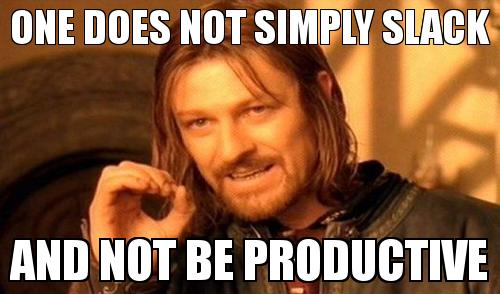Slack is a modern collaborative communication tool which simplifies day-to-day team communications, messaging and sharing of ideas. It’s an acronym that stands for Searchable Log of All Conversation and Knowledge. With over 2.5 million active users, Slack is gradually becoming an effective alternative to email clients and other conventional communication tools. Slack’s massive popularity can be easily attributed to its ability to offer a platform for group chat channels and seamless integration with third-party services.
How it’s Different from Other Collaborative Tools
Despite being effective, conventional team communication tools such as email clients and instant messengers such as Skype have always had their limitations. An organization with large teams operating from remote locations and working across multiple projects find those tools increasingly limiting, particularly within the sub-groups. In other words, with email clients, the communication can become cluttered, hampering productivity. This is precisely where Slack comes into the picture.
Ease of Design: What truly makes Slack stand out from conventional collaborative tools such as email clients is its unique features such as following and finding conversations. It organizes conversations based on channels, which are presented in threads. Therefore, one can easily track and follow the conversations from one’s team members.
Clutter-free: Apart from ease-of-use design, Slack also offers a solution that most conventional email clients have been grappled with for a long time – spam and unsolicited emails. Slack offers a clean and clutter-free collaborative communication platform unlike email clients wherein you must wade through unwanted emails before you could track the real conversations. Being an invite-only communication platform, teams can confine their communications to specific groups and channels. Moreover, it also features “private channels” for team communications that are rather private.
Direct Message: Slack enables team members to communicate with one another via Direct Messages which are completely private and secure.
Sharing Files: Slack allows you to share files with your team, simply by dragging and dropping them on the platform itself. You can search for old files and comment on them too. Since it’s integrated with services like Google Drive, Dropbox, and Box, you can share files by dropping links associated with a particular file stored in those apps.
How to Use Slack for Better Communication
Slack helps you reduce dependency on emails and text messaging, thereby helping save time and improve productivity. However, in order to take full advantage of Slack, you should follow the best practices. Here are some ways to make the most out of your Slack communications.
Use it Exclusively for Team Communications: Slack is a productivity booster when used exclusively for team communications. Stick to team related communications and stay away from using it for personal communications. Use email and text message only when it’s really urgent. The less you depend on emails and text messages for communications, the more time you save and more productive you become.
Use it for Serious Topics: Slack is most useful when used for serious and on-topic conversations. It’s not where you should share silly jokes – you can but it defeats the whole purpose of keeping team communication tight and to-the-point. After all, the main objective is to streamline your team communications and boost productivity.
Mute Undesired Channels: As a Slack user, you can be part of multiple channels, and therefore, may receive notifications from all of them even if conversations in some of those may not really concern you. That can create distractions for you. So, it’s a good idea to mute those channels that you’re not currently active in. When you’re not focused on some urgent task, it’s also a good idea to set yourself “away” until you’re available again. Knowing these useful Slack hacks can also take your productivity to a whole new level.
Learn Advanced Search Functions: Learning how to search for the right information within Slack platform can actually save tons of time and add to your productivity. Whether you’re looking for a specific channel, user or file, you can find it faster by using search modifiers such as “in:#channel”, “from:user” or “has:star” to narrow down your search queries and find what you’re looking for quickly. Here are some more Slack tricks to help you save more time and improve productivity.
Integrate Other Services: While Slack allows seamless integration of other services, try not integrate too many apps. If you’re only looking to share files stored on your Google Drive or Dropbox or both, it makes sense to connect Slack to them. There’s no reason why you should connect Slack to Twitter for the sake of it. Getting unnecessary twitter notification on Slack can not only distract you but slow you down too. If you want to integrate other apps, consider using tools like Zapier that let you integrate apps creatively.
How Slack is Changing Workplace Communications
Slack has broken down boundaries between different teams and helped business get more out of their work and life. Businesses both small and big have witnessed tangible benefits from using Slack as a primary tool of team communications.
According to Slack, companies such as SurveyMonkey, Ocado Technology, and Jet have reduced their email dependence by 50%, and improved workflow as well as helping them build a collaborative work culture and better teams across the board.
In fact, as per a survey by Slack, most of their customers said it improved their overall productivity by 32.4% and increased transparency by 80%.

Final Thoughts
As a cutting-edge collaborative communication tool, Slack offers innovative features to take your team communications to the next level, especially when it’s integrated to other productivity apps that you use on a daily basis.
How has Slack changed the way you communicate with your team?






